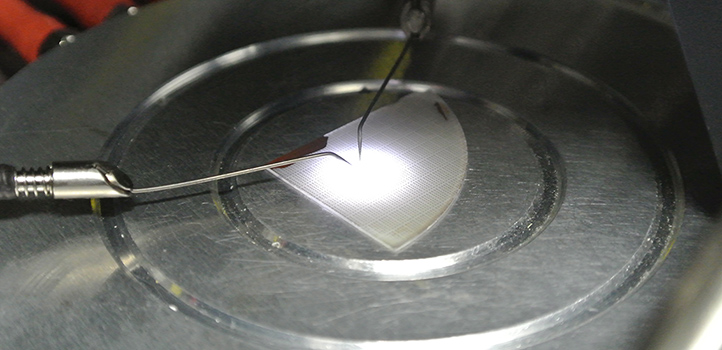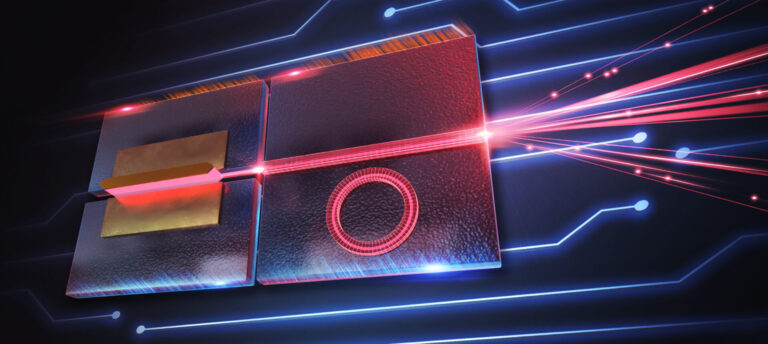Electrical Engineering
Optoelectronic devices that emit warm and cool white light
A single semiconducting material can produce white light by emitting light across the visible spectrum.

The advantages of light-emitting diodes (LEDs), such as their tiny size, low cost and excellent power efficiency, mean they are found everywhere in modern life. A KAUST team has recently developed a way of producing a white-light LED that overcomes some critical challenges.
Blinking away on almost every modern electronic device, LEDs transmit messages in their own distinct shade of red, green or blue. The coloration of an LED comes from a semiconductor inside that emits over a narrow spectrum of optical wavelengths. The inability of LEDs to emit across a wider spectrum restricts their use in lighting applications — emitting a wider spectrum is necessary to generate white light — or for displays that require a wide palette of different colors.
One approach to fabricate white-light LEDs is to combine devices of different materials, where each material emits a different color. The emission of red, blue and green from the different materials can be combined to create white light, but this increases the complexity and cost of manufacture of LEDs. Alternatively, a single semiconductor can be used by mixing in a phosphor that absorbs some of the light emitted by the semiconductor and then re-emits it as a different color. However, phosphor degrades over time, limiting the useful lifetime of these devices.

Research scientist Daisuke Iida produces a white-light LED that overcomes some critical challenges.
© 2020 KAUST
Daisuke Iida and Kazuhiro Ohkawa’s team have devised a way to build phosphor-free monolithic white-light LEDs using the semiconductor indium gallium nitride.
The emission color of indium gallium nitride depends on the relative content of the indium and gallium atoms. For example, gallium nitride emits ultraviolet light, but adding indium shifts the emission across the visible spectrum and into the infrared. The emission can be controlled further by sandwiching very thin layers of indium gallium nitride with one composition between two layers of different composition, creating so-called quantum wells.
“What is unique about our devices is that we use material defects, or V-pit structures, to enhance the injection of a current into the semiconductor,” says Iida. The LEDs designed by the KAUST team included both blue-light emitting quantum wells with a 20 percent indium content and 34 percent indium red quantum wells. Combined, this monolithic LED emits light across the entire visible spectrum. By controlling the current passing through the device, the team could change the emission from a warm white to a natural white and through to a cool white.
“The next step is to improve the emission efficacy of the red emission component,” says Iida. “The red emission is a key factor of the high color-rendering LEDs with the natural white emission.”
References
-
Iida, D., Zhuang, Z., Kirilenko, P., Velazquez-Rizo, M. & Ohkawa, K. High-color-rendering-index phosphor-free InGaN-based white light-emitting diodes by carrier injection enhancement via V-pits. Applied Physics Letters 117, 172103 (2020).| article
You might also like

Bioengineering
Sensing stress to keep plants safe

Computer Science
Sweat-sniffing sensor could make workouts smarter

Electrical Engineering
New tech detects dehydration by touching a screen

Electrical Engineering
A new interface for efficient electronics

Electrical Engineering
Artificial neurons enable neuromorphic computing with light

Electrical Engineering
Narrow-linewidth lasers bring low-noise answer

Electrical Engineering
Octopus suckers inspire sticky medical patch

Electrical Engineering




